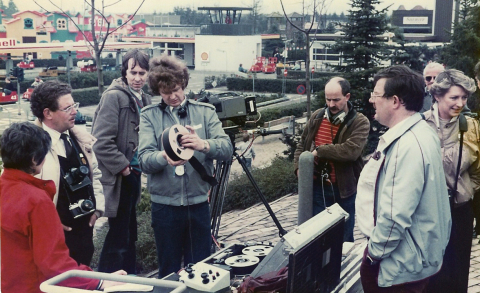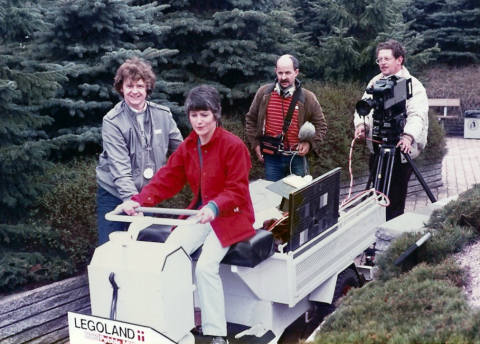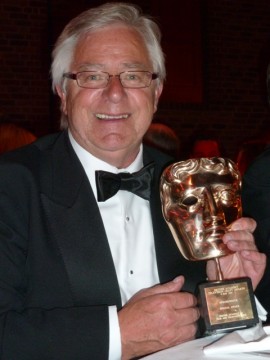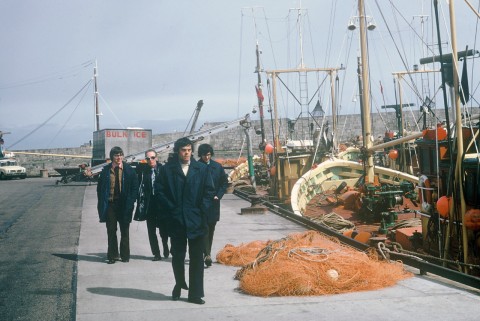Photo copyright Roger Guest, no reproduction without permission.
Ian Dewar and myself started that operation.’
Ray Lee: ‘Yes it was an Ampex VR3000 and had large rechargable batteries which might last for one tape if you were lucky. It produced a very basic monochrome playback, which really did little other than indicate something was on the tape. It was very noisy, as the head assembly was mounted on ball bearings, unlike the airbearings that were used in all the full size machines. Little chance of assessing sound quality, but maybe that was recorded separately on a timecode linked tape machine. I don’t know details of how it was used in the field, but did have to attempt to repair it a few times. ! Very quicly replaced by the VPR10 1″ machine for these type of productions.’
Jane Clement: ‘I seem to recall they went to Freetown Christiania as part of the trip – the big hippie commune in Copenhagen – is that right Steve N Weddle and Jane Mclean?’
Jane Mclean: ‘Oh just look at us Mike Bloore! Yes Jane, we did indeed and I was petrified. They had lots of huge dodgy dogs. I went for a wee under a bush and two dogs charged me midst flow. The owner stopped them just before they reached me by which time I was wrecked. Ian Dewar had to give me medicine from his hip flask.’
Steve Weddle: ‘Heavens yes, Christiania, the hippy commune right in the heart of Copenhagen which proclaimed itself a free state. As I was the nearest thing we had to a hippy – long hair and a duffle coat – I went in to hold discussions with their leaders to see if they would allow us to film in their break away state. They eventually agreed, giving me a promise that our safety was assured. As if! No sooner had we started filming than we were greeted by a break away faction brandishing sticks and bricks, demanding our immediate departure from the site, or else. A tense few minutes ensued until my contact there won the day and we were allowed to carry on filming. And good on John Smith for holding his nerve. Plus I do remember that incident of the dog in the daytime, Jane. I seem to recall the Danes having a weird thing for Alsatians. But that’s for another time!’






